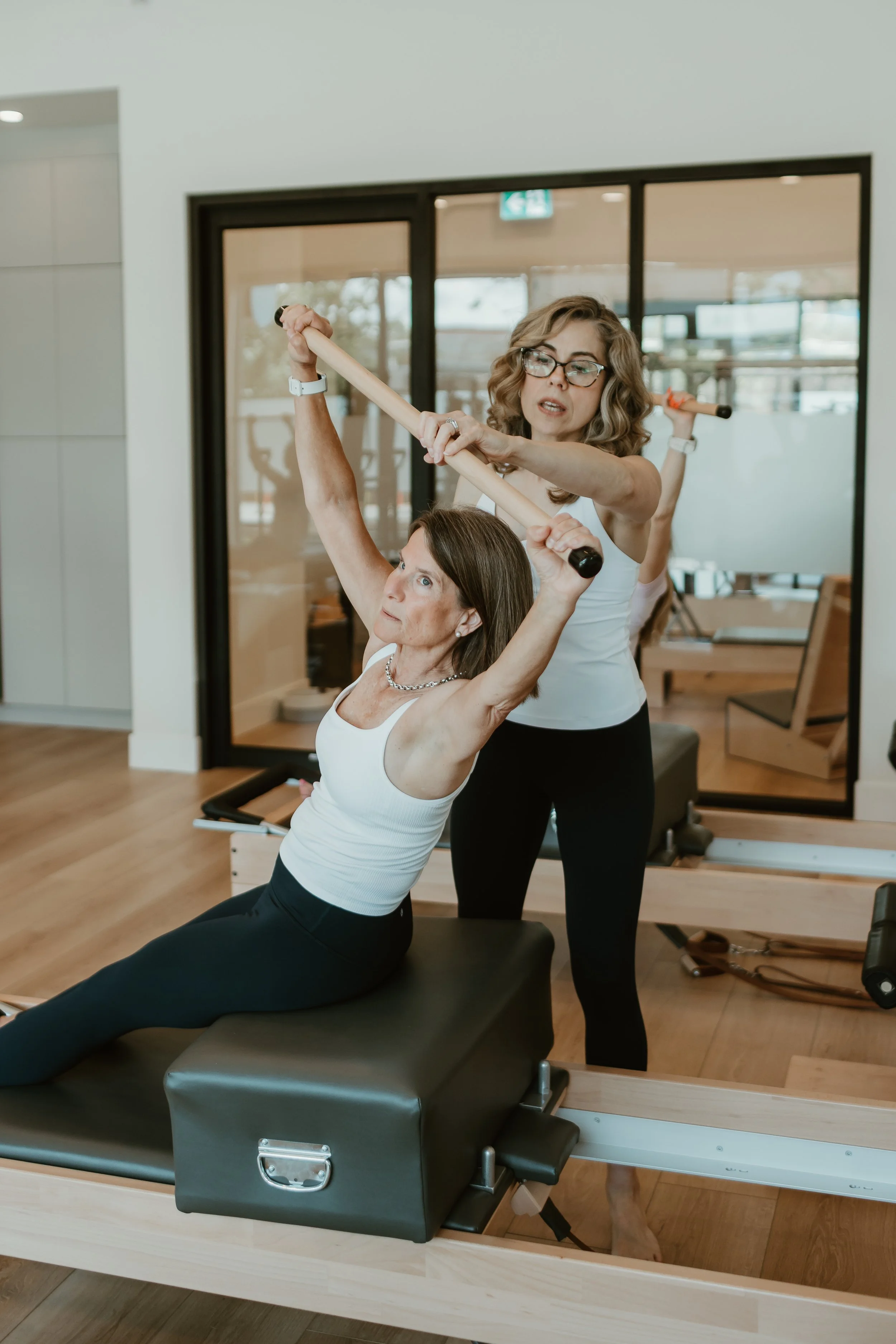Study shows adding Pilates exercises increases quality of life
While patients are recovering after their total knee replacement surgery, they given a certain number of physiotherapy visits to begin to rehabilitate the tissue around the new knee. Often physiotherapists at hospitals follow a standard exercise program specific to knee surgeries.
A fascinating randomized control trial compared the addition of Pilates exercises to those standard exercise programs. Adding Pilates significantly increased quality of life in study participants.
Forty-six volunteers were divided into two groups:
1.the control group was assigned the standard exercise program after discharge from the hospital
2.the study group was assigned Pilates-based exercises along with the standard exercise program
Throughout the 6-week program, the researchers carried out their clinical evaluations. They discovered that the group performing Pilates along with the standard exercise program scored significantly higher for improved balance, reduced pain, and increased quality of life than the control group.
Total knee arthroplasty (TKA) is typically performed in older individuals due to osteoarthritis. Surgery does result in improvements in joint function, decreased pain, increased joint mobility, and better functional performance and balance (Karaman et al., 2017).
However, patients with TKA typically have more difficulty performing functional activities at the end of the first year following surgery (Karaman et al., 2017).
One of the causes is insufficient stabilization of the trunk during functional activities due to abnormalities in balance and postural control (Karaman et al., 2017).
These effects can make it difficult for older patients to complete daily-life activities, and the risk of falling increases in the early period after surgery.
Hospital physiotherapists prescribe certain exercises to avoid TKA-related complications, and additionally to help decrease the risk of falling and increase quality of life and functionality. It is true that these standard exercises help with managing pain, increasing joint range of motion, restoring muscle strength, and improving functional performance and balance.
All exercise is good for the body. So is that standard exercise program given by physiotherapists. My mom has had two knee replacements and her physiotherapist was amazing at helping her gain strength and mobility in and around her knees.
The key point is that the addition of Pilates exercises helped even more than the standard exercises alone.
Statistically, Pilates made the healing and strength results better (Karaman et al., 2017). Pilates-based exercise programs increased static balance, flexibility, and stability, while also improving posture, functionality, and proprioceptive input in daily activities (Karaman et al., 2017).
Why? Researchers propose that because the Pilates group was taught how to breathe properly while performing the exercises, their deep core muscles were activated (transverse abdominis and multifidi) while utilizing the Pilates principles of centring, concentration, control, precision, flow, along with breathing (Karaman et al., 2017).
The Pilates group progressed their 6-week program to include traditional Pilates exercises like the stomach series (the series of 5, our fave around here!), side-lying kick, shoulder bridge, swimming, and prone single/double leg kick, which are all exercises we do here at the studio using the Pilates Apparatus. Simple exercises, but challenging and effective! Researchers also propose that due to a greater need for concentration while performing Pilates exercises, patients learned to draw their focus away from their pain and toward breathing and precise movements.
What a great study showing the amazing benefits of Pilates!
References:
Karaman, A., Yuksel, I., Kinikli, G. I., & Caglar, O. (2017). Do Pilates-based exercises following total knee arthroplasty improve postural control and quality of life? Physiotherapy Theory and Practice, 33(4), 289–295. https://doi.org/10.1080/09593985.2017.1289578
Studio Photos: Meg Kristina Photography




